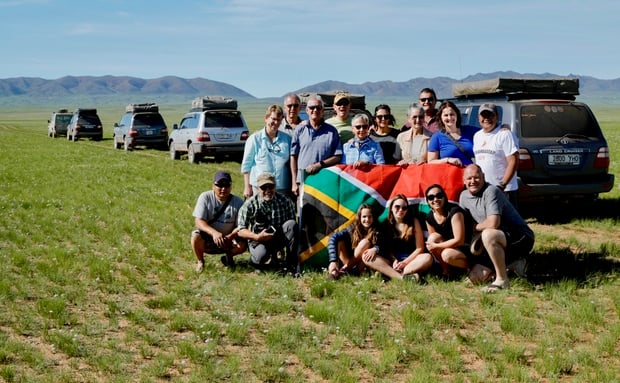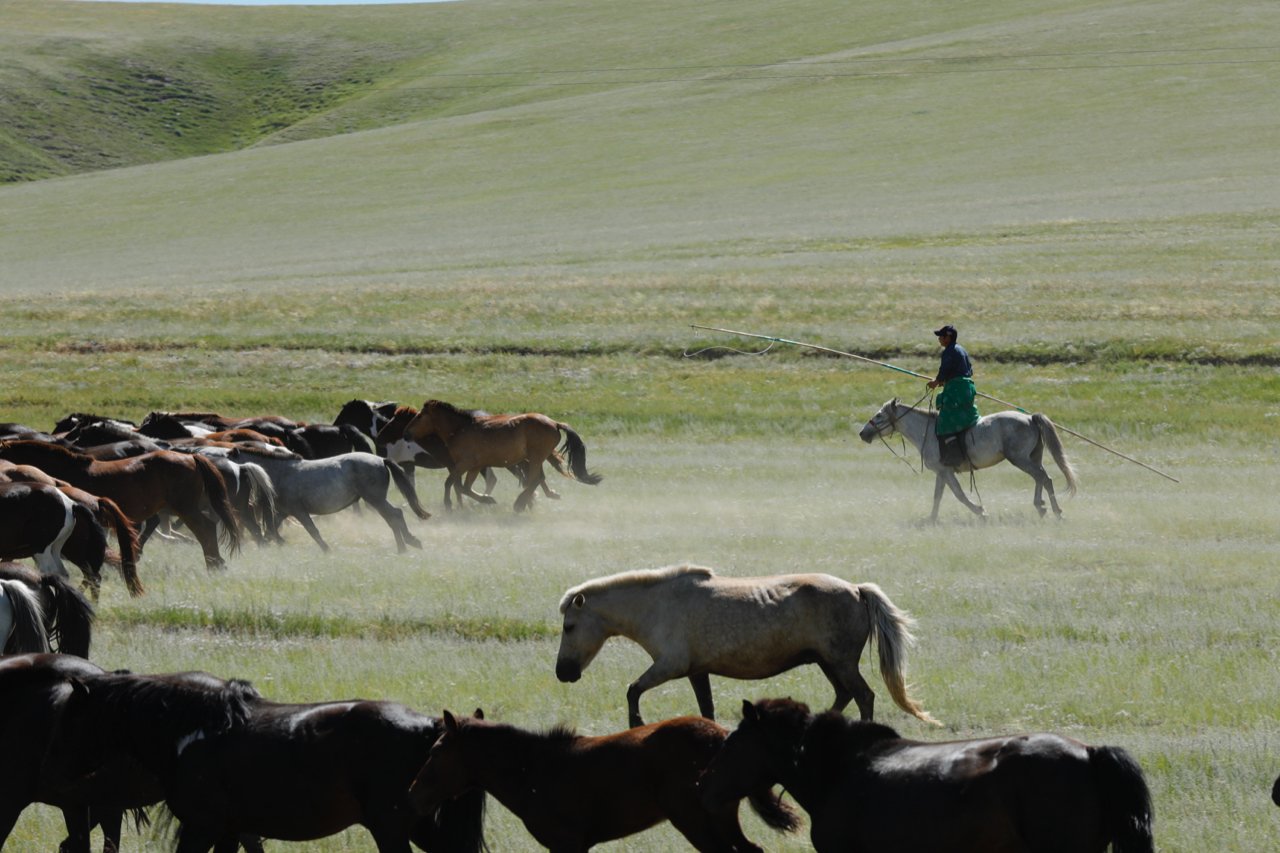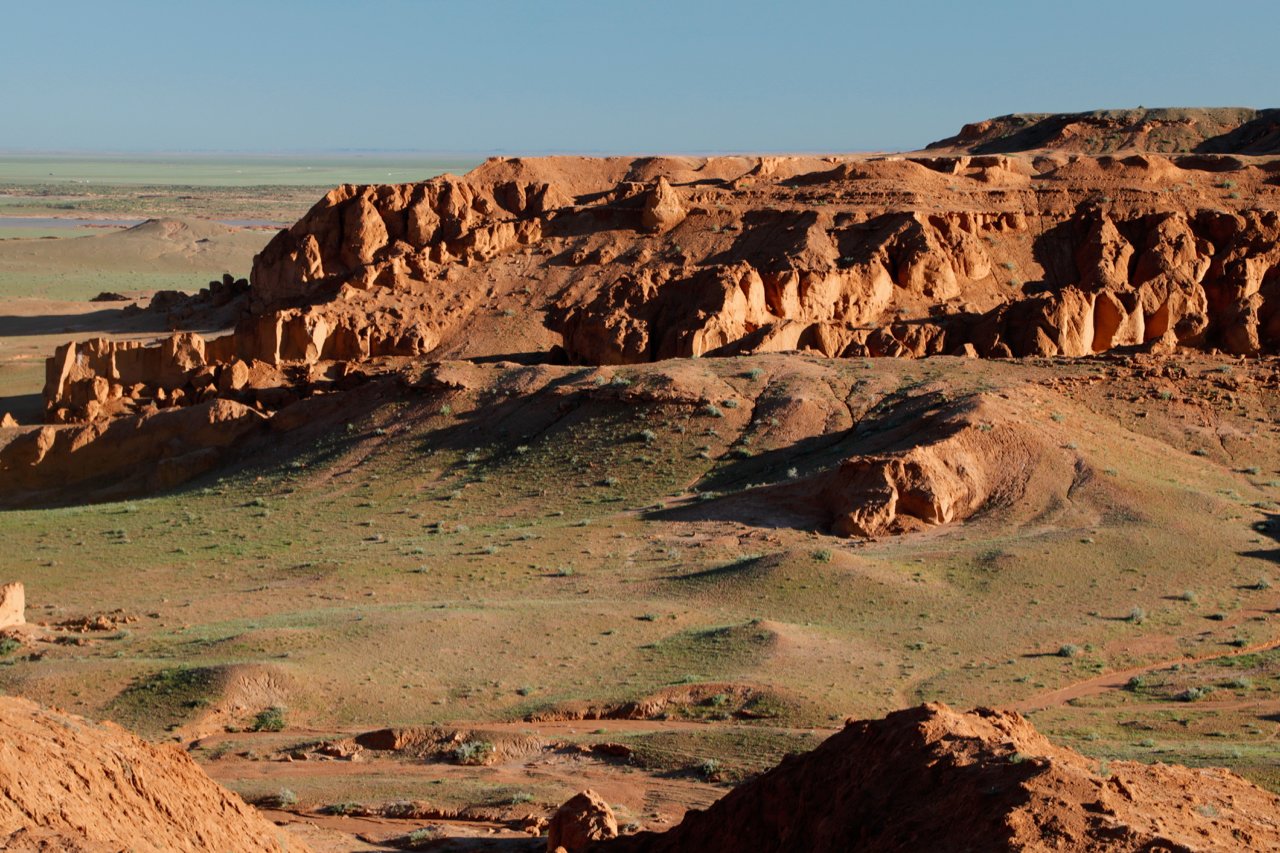Boundless Mongolia

Boundless Mongolia
By Laetitia de Lange
At first, we were disappointed when Live the Journey informed us that 2018 is not the year that they are planning for a guided, 4x4 self-drive tour to Iceland. They suggested Mongolia instead when we enquired about Iceland. None of us even knew where Mongolia is on the map! The only knowledge we had was fromthe series ‘Marco Polo’ that we were watching on Netflix! We decided to open a map and establish Mongolia’s location. We were quite surprised by the size of the country that nestled in between Russia and China. It is the 18th largest country in the world, but listen to this, it is also the most sparsely populated country, with only around three million inhabitants. Definitely not a crowded place. After contemplating for a few days, we decided to be bold and go to Mongolia.
Ulaanbaatar is the capital city of Mongolia and that is where our journey started. Flying to Ulaanbaatar was an exhausting 26 hours, but we were greeted by our friendly guide, Baatar,who assisted us in acquiring our visas at the airport. We were transported to our surprisingly western style hotel, which was about 30 minutes from the airport. On our first night in Ulaanbaatar, we were taken to a restaurant and introduced to some local cuisine. The food was very similar to ours in South Africa, whichinclude different kinds of meat and vegetables. They have a very interesting style of making stir-fry by using two enormous spatulas. What an interesting show to watch.
The next day we visited one of the Buddhist temples in the city to learn more about their religion. Afterwards, we did some quick last-minute shopping before our journey into the wild started. We also received the keys to our Land Cruiser 100-series vehicles. That evening we were entertained by a show of Mongolia’s traditional throat singing, instruments, dancing and contortionists. We were absolutely amazed by this and thoroughly enjoyed watching something completely different than what we are accustomed to. I realised we still had a lot to learn from this country.
Day three and we were all packed and ready to start our self-drive journey. We had a hilarious moment just before we started our journey when hubby and I both climbed into the wrong sides of the vehicle. We forgot that Mongolians drive on the right side of the road. After correcting our mistake, we were off on a wet and cold day.
At first, we were on tarred roads which helped us getting used to driving on the right side of the road while admiring the city, and shortly after, seeing some ‘ger’ accommodations. A ger is the traditional home of Mongols. It looks similar to the ‘rondavels’ in South Africa, but instead is made of wooden mesh, plastic isolation and animal wool. We then proceeded to the south of Ulaanbaatar and began our route on gravel. The open vastness of the country was breath-taking, with green pastures as far as the eye can see. Weheard that Mongolia experienced a higher-than-normal rainfall, which resulted in the landscape being a lot greener than usual, which made our experience even more spectacular.
We saw a lot of domesticated animals, like horses, camels and yaks. They are allowed to roam freely. Large herds of sheep and goats would wash over the hills into the valleys late afternoons to find protection against the elements for the night. We learned that in Mongolia there were more animals than people… three million people versus 60 million animals. There were no border fences to be seen anywhere and we were fascinated by the fact that the nomads were able to live next to each other and share the land with each other’s animals without erecting fences.

Lunch was enjoyed on the lovely green pastures and Baatar enlightened us with some history of Mongolia. Of course, Genghis Khan played an enormous role in putting Mongolia on the map and strengthening the silk route. In his lifetime, he conquered more land than the Roman Empire managed during its entire existence! Our first night was spent in a traditional ‘tourist’ ger. What a wonderful experience. Our round room was spacious, comfy and warm. Gers are so much a part of nomadic Mongolianlife, you have to experience it to connect with the country and its people. The tourist ger camps are upgraded compared to the traditional versions and have communal dining areaswhere buffet meals are served. The ger-camps where we stayed were all located in the most beautiful places.
We started to move westward into the Gobi Desert area and instead of having the normal views of different shades of brown, it was green! The rain certainly turned the landscape intoa totally different view. It was also surprising to smell all the plants and herbs when getting out of our vehicles. From wild onion to juniper and lavender. What a paradise to be in.
We did our first wild camp in the Gobi Desert. What luxury we experienced. Baatar’s team assisted in pitching our rooftop tents and the wonderful cook, Yaganath, made some really amazing Mongolian food from inside her little minivan. We even had dessert. I wish I couldtake her home with me. Even my fussy daughter enjoyed her cuisine. The setting of this luxury wilderness camp was absolutely magical. We felt like the first people ever to camp at this spot. Baatar did not just know about Mongolian traditions, he knew that South Africans enjoy big fires and did not disappoint when we were able to sit around a lovely campfire to keep warm.
We drove through the Gobi Desert for a few days, and although I initially thought that it would consist of dunes only, we drove through different terrains. We had a day or two of rain and it started to get really muddy, but it allowed for lots of fun. We even assisted fellow drivers who got stuck in the mud in the desert! We visited a local nomadic Mongolian family and was hosted inside their ger, tasted horse milk and some scrumptious biscuits.
Not once did we see border fences and even roads were sometimes non-existent. We were allowed to drive wherever we could in the countryside. When passing through towns, I was reminded about the rural areas in our country. The towns were basic, with perhaps one or two small shops, and in some towns, there was only a single fuel pump. The houses were painted in bright colours and very few roads were tarred.

We visited the flaming cliffs where the American explorer, Roy Chapman Andrews, discovered dinosaur eggs and other fossils, a palaeontologist’s paradise. We were even allowed to dig for dinosaur bones. After enjoying ourselves thoroughly as archaeologists, we headed for a small village, Saikhan-Ovoo, in the middle of the Gobi province. Here we visited two monastery ruins. Both of them were destroyed by the communist purges in the late 1930’s.
Next was Karakorum, the first capital city of Mongolia, founded by the grandson of Genghis Khan, Kublai Khan. Here we also visited the biggest waterfall in Mongolia, the Orkhon Waterfall. It is worth mentioning the number of different birds we saw. The keen birdwatchers in our group were ecstatic. Mongolia has more than 400 bird species. The migration routes from the Indian and Pacific Ocean to the Mediterranean and the Arctic cross over the country, which makes it a birdwatcher’s paradise.
Our route started moving towards the north and the temperatures were dropping lower the further north we moved. We were on our way to Lake Khövsgöl, which is one of Mongolia’s gems. The Russian border is not far from the lake. The views were beautiful with wonderful sunsets and we had a delicious dinner next to the lake, enjoying Yaganath’s amazing dishes.Here Baatar made a fire with animal dung, which of course is plentiful in Mongolia and is used as one of their fuels to keep their gers warm, and to cook. Surprisingly, it had no smell and it worked just as well as firewood.
After spending two nights next to the lake, we started moving eastward, back to Ulaanbaatar.We visited an enormous volcanic crater as well as one of the most prominent monasteries, the Amarbayasgalant Monastery.
Our last wild camp ended next to a river where we were entertained by local nomadic Mongols showing us how they herd their horses with experienced horse riders. Imagine, a herd of 500 wild horses. What a fascinating show to watch as they swiftly move through their herds and use rope to catch a wild horse. We were also given a special meal, which is similar to our ‘potjies’, but they cook their meat together with hot stones inside. It was a nostalgic and sad evening, knowing that it would be our last night under the trillions of stars, enjoying the humble life of local nomads.
We headed back to Ulaanbaatar the next day and had a farewell dinner at an Indian restaurant in the city. It was sad to say goodbye, as all of us became the best of friends having spentover 17 days together. It was the most amazing experience. Something I never thought of putting on my bucket list, but surely want to tell everyone to make the effort once in their lifetime to go to Mongolia. I felt like a pioneer who discovered a country for the first time.There are so few people who know about the gems of Mongolia and would never think of swapping the usual places for this unusual destination. Paris, London and the Mediterranean-feel is so overrated now that we’ve had the opportunity (and guts) to visit Mongolia!
Mongolia is a place where your soul is soothed. Leaving you with the revelation that all the materialistic stuff in our lives matter too much to us. Mongolia offers brilliant, diamond-studded night skies. Open spaces that never end. There are no boundaries. This is a place where the humble are happy and content. This place wants you to go back and start over and not race forward. This is how it should be.




